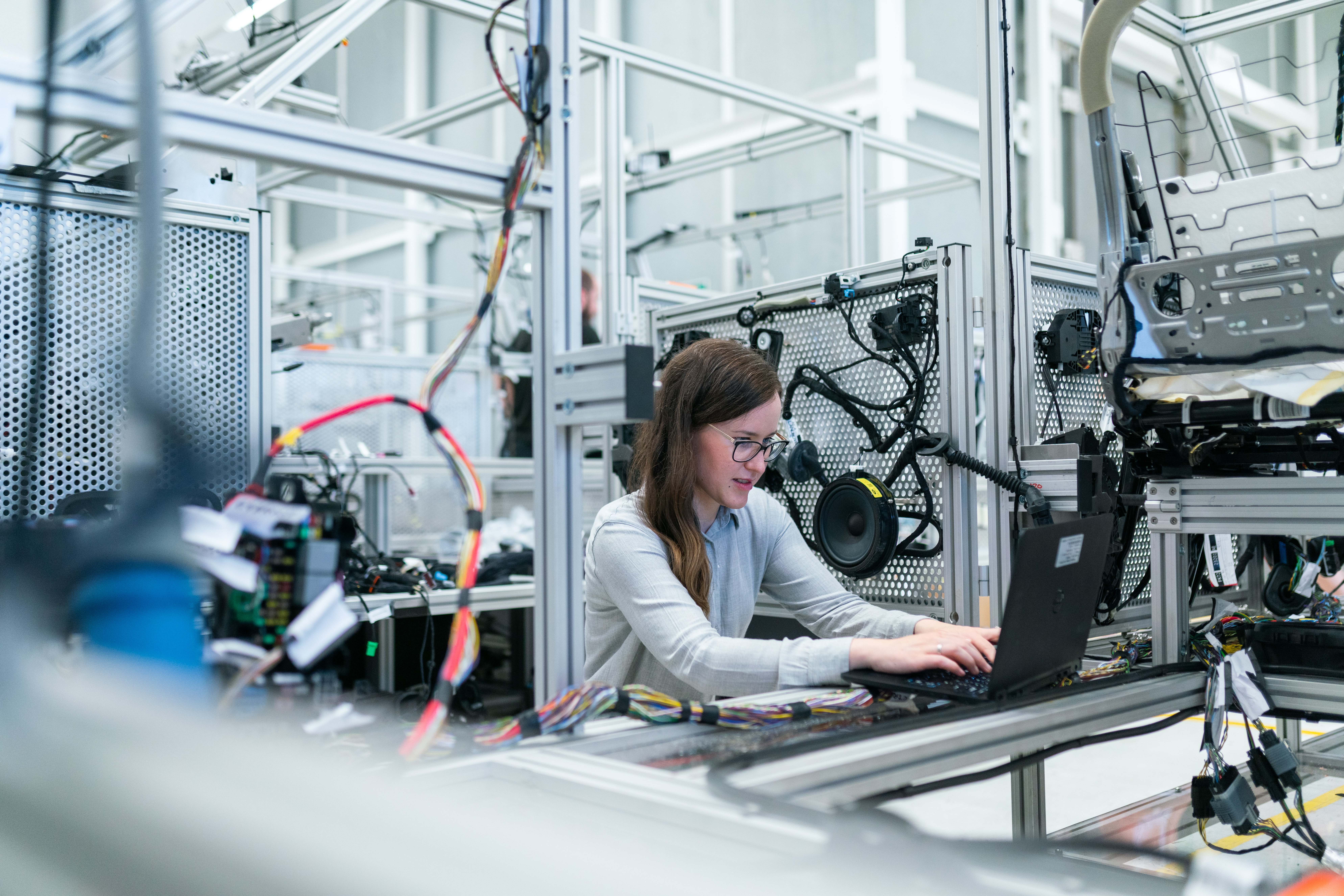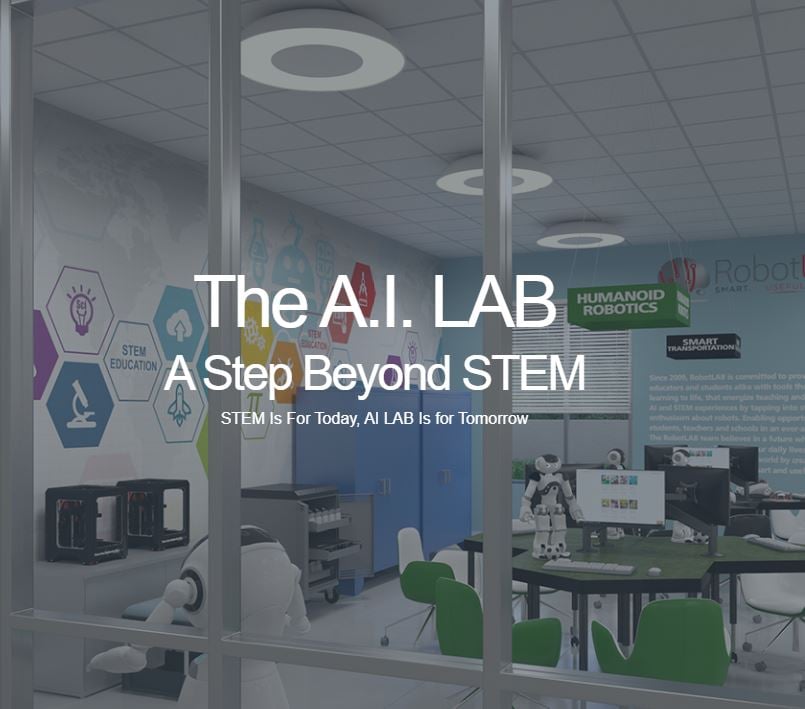By Tiffany Harper
 Photo by Unsplash
Photo by Unsplash
We believe that AI is an extension of humanity and a pointer to how AI can help us achieve more by doing less. AI is humankind’s ultimate invention, and it is the intelligent machine that can think without the limitations of a human being. It is the evolution of man. What was a figment of man’s imagination has become part of man’s reality, and it has set its sights on improving education.
No Need to Fear AI. AI Has Massive Potential for Education
Movies have shaped how people see AI. They imagine the robots in ‘Terminator’ or the androids from ‘Battlestar Galactica.’ So, they view AI with fear and think it would lead to the eventual domination of robots. They want nothing to do with AI but fail to realize they already use AI in their daily lives. They already use Alexa, Siri, and Google Assistants. Alexa in 2018 had about 40 million users, with some reports putting current users at 100 million people. 900 million to a billion people use the iPhone, and it’s Siri.
In addition, 2 billion people worldwide use Android phones with their Google Assistant. Thus, we all use AI in one way or another, and presently AI is used narrowly. By Narrow AI, we mean AI is being used specifically to achieve a targeted goal.
AI, as we said, is the extension of man’s humanity and intelligence. As a result, AI can be used in all man-created sectors. For instance, we have smart camera sensors that influence picture quality, computer vision technology, AI in manufacturing industries, Self-driving cars, automated entertainment, etc. One sector in which Ai is being used and still has vast potentials for AI in education. Experts at Write My Dissertation company believe AI should be focused more on education than any other sector. They base their suggestion on the belief that education is key to everything. When the learning process becomes more efficient with the assistance of AI, humanity will evolve more and push technology ahead.
While experts are not sure if AI should be focused more on education, they believe there would be significantly more AI investment in education. Presently, a report suggests that AI in education will grow by about 47.50% from 2017 to 2021. Experts at Research and Markets confirm this by their statistics which says AI will improve by 47.77% from 2018 to 2021. The bottom line is, AI in education is a thing, and as recommended by ninjaessay, we will show you 7 roles AI will play in education.
AI can Help Make Grading Easier.
The current educational system has the teacher doing so many things that could prevent them from discharging their primary function, which is to teach. Apart from educating, a teacher must ensure that a teacher understands and fashion out methods to gain maximum student concentration. Mixed with this is also the incredibly tedious and energy-sapping homework and test grading. A teacher isn’t grading one, two, or three papers. A teacher could grade as much as 20 or 30, depending on the students in the class.
Grading takes a lot of time, and it could limit the time a teacher could be used to prepare for another class. Lack of preparation for a teacher is devastating to the students. AI could help grade the students. Although, currently, AI is best suited for grading multiple-choice questions and tests where students fill in the gap. Using AI for essays still requires more work, and soon, AI will be fully optimized for grading. Thus, allowing teachers to be leaders
AI can Personalize Education
One of the flaws of the current educational system is the one size fits all approach. Teachers have a generic way of teaching and expect all the students to understand what teachers teach. The educationists at EssayMama site write that AI can help transform generic teaching into personalized teaching.
This would be achieved through the use of adaptive learning exercises, software, and games. The adaptive learning changes to suit what a student needs and help them fill the gap in knowledge in those areas. This learning program also factors student academic abilities and pace them so they wouldn’t be overwhelmed by the school work. Thus, by cooperating with the teacher, this AI can help the teacher develop diverse teaching skills for various students.
AI can Point Out Weakness
Students can be lost in the coursework and thesis that they have to do. It is expected that they have challenges in certain aspects of their study. AI can help solve these challenges by utilizing the automated AI-assisted grading system mentioned above. The AI grading the tests and assignment collate the mistakes made and inform the teacher of these limitations. The students will be retaught those areas so that they can understand better.
AI could Serve as A Support Teacher
A teacher can only do so much, and they need AI to boost their efficiency. AI can be used as a support teacher in this regard. Tutoring software can help students revise what they have learned, and it can also teach them the basic and advanced aspects of some other subjects. Apart from teaching, AI can help bridge the communication aspects between students and teachers. For instance, a college professor used a chatbot to communicate with students.
Motivate Students
The volume of work a student has to deal with can be energy-consuming. This makes it easy to or gets bored of the repetitions they have to deal with when studying. AI can help students get through these repetitive tasks by motivating them. The AI can achieve this by incorporating some elements of a game into the students’ syllabus. Also, using the knowledge of the students’ academic abilities and weaknesses, the AI can provide personalized ways to make learning fun.
AI can Eliminate Long Distance Learning Challenges
Now that distance learning is in fashion, with some students unable to leave the house, AI can make the effects of remote learning less cumbersome. This method is also useful for students who have illnesses that prevent them from being physically present in class. Learning bots can help the students peel physically present as they have screens the students can look through and arms the student can use in participating in group activities. The challenge of interactivity is reduced as the teachers can see the students’ reactions on the screen of the learning bots. Apart from students, teachers can also utilize a learning bot to teach their students.
Digitized Learning
Learning doesn’t have to be one-dimensional. Using an approach for learning could make it tedious and boring for both the students and the teachers. AI can make learning fun and interesting by digitizing learning through the incorporation of visualization in learning. Human beings are visual beings, and bringing knowledge to life could be the difference between a teacher who teaches well and a student who understands what is being taught. So, instead of big textbooks, digital textbooks would be used, containing video simulations of what is being taught.
Conclusion
AI is no longer in the future, and the benefits of AI cannot be underestimated. AI and perhaps in the future can fix the current gaps in the current educational system. We can have a system where there is a complete collaboration between human teachers and AI.
Discover More About A.I with RobotLAB



